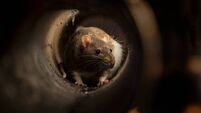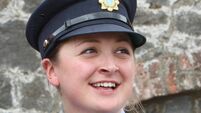Inquest hears of severity of Savita's condition

An inquest into the death of Savita Halappanavar has heard that she had one of the most severe cases of septic abortion ever seen.
Tests showed that Savita Halappanavar suffered multi-organ failure due to septic shock, a rare strain of the E.coli bug and a miscarriage at 17 weeks gestation with severe chorioamnionitis, an infection of the foetal membranes.
She had been admitted to University Hospital Galway on October 21 when an inevitable miscarriage was diagnosed and died a week later in intensive care, four days after she delivered a dead foetus.
An expert witness, pathologist Peter Kelehan, revealed of the 700 to 800 miscarriages he would see each year it was “exceedingly rare” to come across the level of infection in Mrs Halappanavar’s case.
He said the placenta showed findings of severe sepsis with extensive overgrowth of bacteria and acute chorioamnionitis.
“These are classic appearance of ’septic abortion’ in the second trimester of pregnancy,” said the consultant, who recently retired from the National Maternity Hospital.
“This is rarely seen by pathologists.”
The midwife previously described a “septic abortion” as a patient so overwhelmed with sepsis her foetus is not going to survive and would abort.
The experienced consultant maintained in his 40 year career of examining placentas post miscarriage he had only seen four or five cases as bad, but that Mrs Halappanavar was the only woman who had died.
“Each time I made the diagnoses I would pick up the phone,” he added.
“It’s an alarming situation.”
He told the coroner that the infection grew so quickly as a result of the death of placenta tissues.
For more than an hour Dr Kelehan and Professor Grace Callagy, who carried out the autopsy on Mrs Halappanaver, outlined in graphic detail how the infection attacked her body and shut down her organs one by one.
Her widower Praveen did not attended the seventh day of her inquest, the last day of evidence, as the details of the reports were too upsetting, his solicitor said.
Gerard O’Donnell said evidence given yesterday on abortion laws was “taking its toll” on his client, who was preparing himself for a verdict tomorrow.
“It will be very, very difficult for him, very tough,” he added.
Dr Ciaran MacLoughlin will charge the 11 jury members in the morning. Prof Callagy told the coroner’s court the cause of death was septic shock, E.coli in the bloodstream – the ESBL strain which is resistant to most antibiotics – and miscarriage.
A short statement by Sebastian Lucas, one of the UK’s top experts on sepsis who backed the findings of both pathologists, was also read into the record.
Prof Callagy agreed with Dr MacLoughlin that when Mrs Halappanavar’s membranes ruptured, she was vulnerable to infection.
The coroner also asked if prior to the infection had Ms Halappanavar been a strong and healthy 31-year-old woman.
“Yes,” Prof Callagy replied.
“No other abnormalities.”
Yesterday, leading obstetrician Peter Boylan claimed the dentist would probably still be alive if the law in Ireland allowed an abortion as she miscarried before there was a real risk to her life, by which time it was too late to save her.
He outlined a number of deficiencies in her care, but stressed that none on their own was likely to have resulted in Ms Halappanavar’s death.
Consultant obstetrician Katherine Astbury, who was in charge of Mrs Halappanavar’s care, previously admitted there were “system failures” but claims she could not carry out an abortion because of Irish law.













